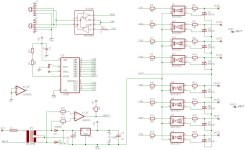ErnieHorning
Supporting Member
Here are the pin definitions.I’ll look around, I have the pin definitions for the D-light board somewhere...
You can get up to 3 free sample on Microchip.com.Ok, what do I need to do to get new micro's.
There’s a free development IDE tool called MPLAB that you can use to write assembly as is. You can also attach third party tools if you want to write in a different language.What Software and hardware.
You’ll also need a programmer. I use MPLAB IDC2, though there are cheaper programmers. You compile and program through MPLAB.

